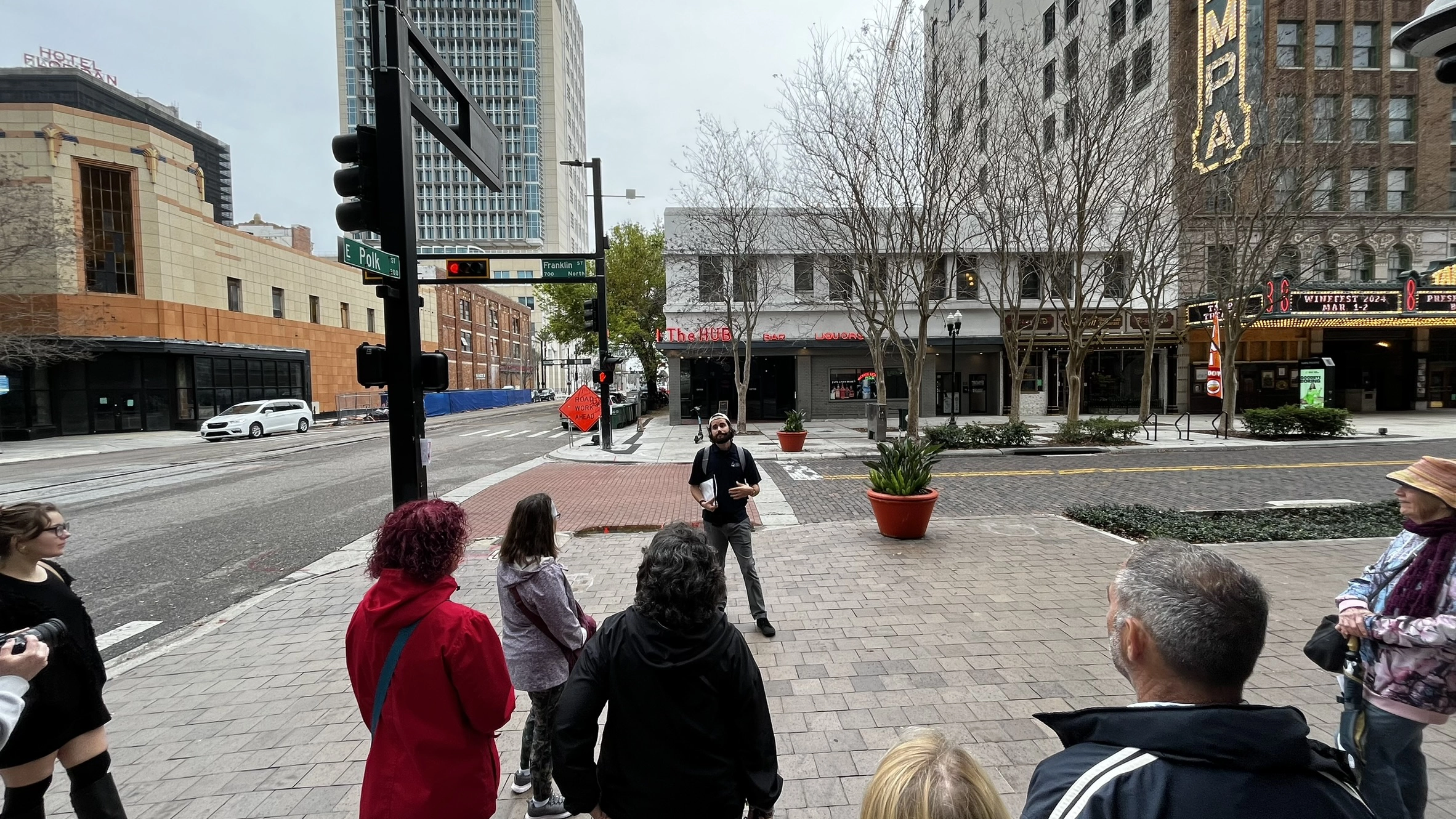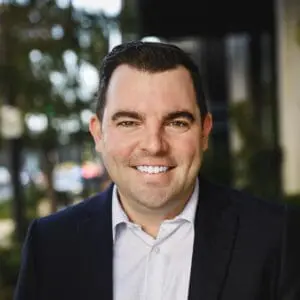Discovering Tampa’s soul

How T.J. Chaltry’s passion for history transforms the everyday into extraordinary walks through time
Experience Downtown Tampa through the eyes of T.J. Chaltry, a lifelong resident turned passionate history walking tour guide. His journey into the past began with a simple visit to the Tampa Bay History Center, igniting a fervent quest for knowledge. This quest transformed downtown Tampa from familiar streets into a canvas full of historical narratives. From tales of organized crime to the fight for civil rights, Chaltry’s tours unveil the layers of history that shape the city’s identity. Join us as we explore how Chaltry’s deep connection to Tampa’s past brings its stories to life, offering both residents and visitors a chance to walk through history and discover the lesser-known gems and turbulent tales that define this city we call home.
Background and connection: Can you share a bit about your background and what led you to become a history walking tour guide? How do you connect personally with the history of the area?
I’ve lived in Tampa most of my life, but I didn’t become intensely interested in it until a trip to the Tampa Bay History Center many years ago. That spurred a bunch of independent Internet research on a whole host of Tampa-related things, as well as my checking out every book in the Hillsborough County Public Library Cooperative with the word “Tampa” in the title.
I had been living in, around, and seen a lot of Tampa proper, including downtown, but it didn’t really click with me until I learned how it all came to be. Since that discovery phase, downtown has been a magical place in my heart and mind. All that is the greater modern-day Tampa Bay area started and branched out from downtown, specifically. I felt the urge to share what I had learned because it was that fascinating, and I thought others would surely feel similarly. I pitched the idea of a downtown walking tour to the History Center, and it’s been my privilege to do this for five years and counting.
Favorite historical tale: What is your favorite story or legend from this area’s history, and why? How does this story influence or reflect the local culture and identity?
I’m intrigued by our many legends related to organized crime. At the Old Federal Courthouse (presently Le Meridien Hotel), I highlight the 1950 hearing that called forth several local purported gangsters to testify. While they exercised their right to remain silent, Charlie Wall, oft referred to as Tampa’s original crime boss, detailed how he corrupted city officials, ran gambling rackets, and survived multiple attempts on his life. A few years later, death finally came to his literal doorstep as he was brutally murdered. Theories abound as to who did it (and why), but it is an unsolved murder case to this day. Some maintain it was retribution for his tell-all at the Old Courthouse. Tampa’s always been a little rough around the edges, and perhaps we don’t flaunt our mafia-connected past for branding purposes, but you can’t omit it in telling the story of Tampa.
Hidden gems: In your experience, what are some of the lesser-known historical sites or aspects of this area that visitors often overlook? Why do you think these places are significant?
There are certain sites on the tour that we can only compare with photos and use our imaginations for due to the deliberate razing of what was once and still could have been magnificent structures—the Old Hillsborough County Courthouse, the Maas Brothers department store, the original Hub bar, and too many more. I don’t fault casual downtown visitors for overlooking these sites because they are now just generic or barren. Still, I do point out what was once here and there so we might realize the importance of historical designation and preservation.

Historical accuracy vs. myth: How do you balance entertaining stories with historical accuracy, especially when dealing with legends or widely believed myths about the area?
While myths, legends, and stories such as how “Tampa” came to be named, the haunting ghosts of Tampa Theatre, and the pirating of Jose Gaspar are fun, I am upfront with guests when things are, in fact, disputed by historians. I state that some say “this,” and others believe “that,” without taking a firm personal stance on that which we cannot assert with evidence. Our guests rightfully place a great deal of faith in the veracity of what I say, and I flat out tell them when we do not “know” something, which, I hope, they appreciate.
Insightful perspectives: What is one historical event or figure from this area that you believe deserves more recognition or understanding? How do you approach presenting complex or sensitive historical issues to your audience?
Especially as a southern city, Tampa’s past is heavily blemished by racism and oppression, and that can’t be ignored. My presentation of this and similar subject matter is balanced and based on verifiable facts. So many city amenities and public places on our tour were not always accessible to all. Our stop at the Woolworth store lends itself to this issue, as it was the site of Tampa’s first lunch counter sit-in demonstration in 1960. I relish the chance to celebrate local civil rights leaders on this walking tour.


